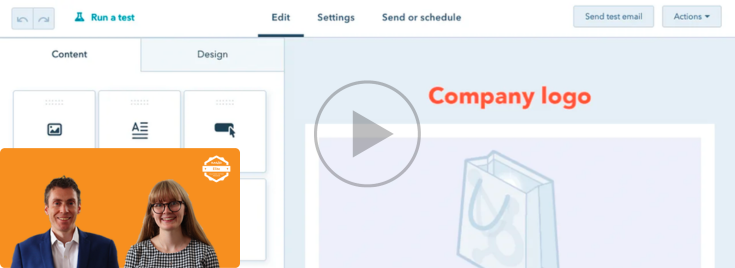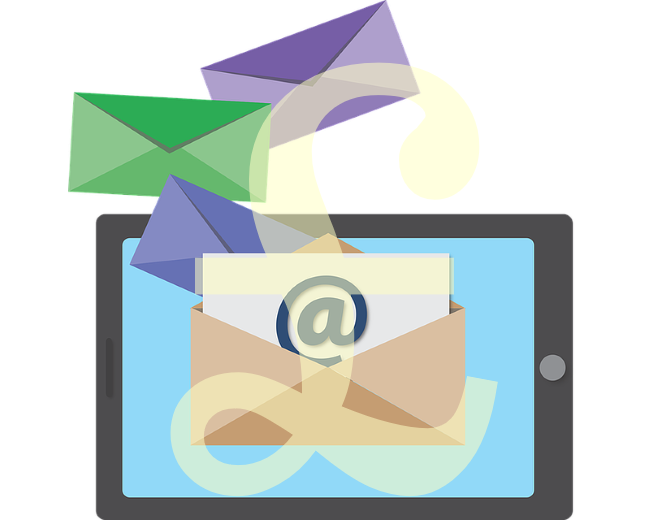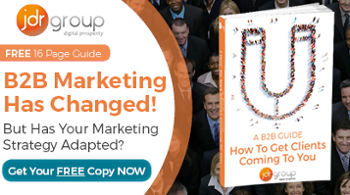Why Use Email Marketing? If You Hate Spam Emails, So Will Your Customers...
by Leanne Mordue on 30-Oct-2015 10:27:00
It isn’t difficult to see why email marketing has picked up a bit of a bad reputation over the years. Hardly a day goes by when our email inbox isn’t clogged up by dozens, if not hundreds, of low quality, irrelevant and dubious-looking spam emails. People hate this sort of thing, and it is enough to make businesses think very carefully about whether to use email marketing, and if so, how to employ it properly.
However, to discount email marketing because of the actions of an irresponsible minority is to turn your back on an extremely robust and proven method of securing new business and boosting ROI from existing customers. Email marketing has been used by reputable businesses since the mid-90s and continues to go strong despite the growth of other digital marketing methods, including SEO and social media.
If done right, email marketing will serve to engage your customers, rather than annoy them. We believe that all businesses can benefit from high-quality, targeted email marketing. If you have yet to experience the advantages of email marketing, or have been burned in the past, we encourage you to read on to see the reasons why to get involved, and some of the methods to avoid.
Why Use Email Marketing?
There are good reasons why email marketing has remained consistently popular for 20 years. The process of sending out targeted, easily digestible emails is fast, efficient and cheaper than almost any other form of marketing.
- Email marketing is low cost marketing
When compared with some digital marketing methods, such as Pay Per Click (PPC), email marketing is outrageously cheap. Many email marketing platforms, such as MailChimp, are completely free for databases of less than 2,000 contacts. Custom templates can easily be created through HTML editors such as Adobe Dreamweaver or CoffeeCup Responsive Email Designer.
- Reaches a massive audience quickly
Reach a guaranteed, self-selected audience at the click of a button. There are no limits to the number of people you can reach by email marketing, so long as you have the supporter base available. This also helps make email marketing one of the most predictable marketing methods available: you know the exact reach of your campaigns so you can accurately analyse the results.
- Increase brand awareness
Most business email users have their inbox open continually throughout the day, and often check it in their own time as well. Carefully timed emails will increase your brand awareness and keep your company at the front of your target customer’s mind at times they are likely to be making purchase decisions. This gives you an immediate psychological edge over competitors that the customer may be researching, even if they have a more prominent Facebook profile or higher Google rankings than you do.
- Create sharable content
Emails can easily be shared with friends, colleagues and contacts, making marketing emails the original ‘viral’ content. Many emails are also shared by recipients on social media, especially if they contain useful links. This further increases the reach of your content.
- Measure the success of your campaigns
Email marketing allows you access to precise analytics. Find out how many emails were opened, how many links were clicked, where in the world your readers are based and much more. Use this information to fine tune future campaigns and make your next email even more successful.
- Great return on investment
Although most individual emails in the campaign will not be opened, email marketing still has an impressive ROI that easily trumps search marketing, PPC or traditional direct mail. The value of email marketing builds up over time, as subscribers to a list open and engage with some emails while not others. The Direct Marketing Association has reported consistent increases in ROI from email marketing since 2012. The key to good returns from email marketing is to focus on relationship building and giving something of value to your list subscribers, rather than using email marketing for one-off sales.
Value-driven email marketing Vs Spam: What annoys people and what to avoid
We live and work in an email culture. At work, a person can expect to receive 100 or more emails per day, from colleagues, suppliers, clients, friends, as well as marketing emails. Clearly it is not the medium itself that causes annoyance. People are annoyed not by emails per se, but by spammy and irrelevant content. Because time is short, it is irritating to have to sift through emails that have obviously been sent without any consideration for the recipient.
The success factor in email marketing is to adopt a value driven approach that selects messages in terms of personal relevance to the recipient. Failing to do this risks alienating your potential customers. To avoid falling into this trap, steer clear of the following mistakes:
- Generic, untargeted emails
Never send an email that isn’t personalised and targeted to the customer. Doing so involves analysing your data and segmenting it by industry, buyer persona and customer relationship, so that your emails remain relevant at all times.
- Sales! Sales! Sales!
It’s fine to use emails as a direct sales tool from time to time, but it is far more effective to send out a mixture of content. Send out links to blog posts and other relevant content, videos, newsletters and useful resources. The great ROI associated with email marketing comes from the cumulative long-term effect of engaging your target audience with carefully selected content and indirect sales messages.
- Unethical use of data UK Data
Protection legislation stipulates that subscribers need to positively opt in to an email list in order for you to send them emails. Failure to do this risks your email communications being marked as spam. This can get you blacklisted from certain email servers and can damage your reputation as a business. There are many ways to collect people’s data, including through having a newsletter signup on your website. A ‘positive opt in’ is considered to go stale after six months to a year, so carry out periodic reviews of your email lists in order to ensure the people who get your messages genuinely still want to receive them.
You will also find email data available to sale through data brokers, although this is a declining trend. If going down this route, make sure you verify the source of the data carefully before purchasing. A list purchased or rented from a third party is rarely as effective as an email list gathered directly from people who have had contact with your business.
By the same logic, don’t sell or pass on your subscribers email data to a third party without their express consent.
- Poor presentation
With so many good apps available for creating good HTML emails these days, there really is no excuse for poor presentation. A sloppily created email creates a bad impression and damages your brand. Use one of the templates supplied by an email marketing application, or create your own with an HTML editor. An important factor to consider is how good your email will look on different devices. When designing your own templates, pay attention to making them responsive, so that they look good whether the reader accesses them on a smart phone, laptop or desktop computer.
- Too many hits
Go easy on your list subscribers. For B2B marketing, as a general rule make sure each segment of your list only gets one or two emails per week. Any more and you risk overloading the subscriber and diminishing the impact of the messages you send.
The Golden Rule
Responsible, successful email marketing can be guided by this golden rule:
Customers should feel they are getting more value from the emails you send than you are.
If your emails come across like you don’t really care about the customer personally, or you are just after their money, or if you don’t offer anything of value, then the recipient is likely to get annoyed. They would be justified in doing so. However, if you take a value driven approach to email marketing, with a carefully segmented contact list and personalised approaches for each group, then you will see why this oldest form of digital marketing is still among the most successful.
- Inbound Marketing (SEO, PPC, Social Media, Video) (819)
- Strategy (360)
- Sales & CRM (191)
- Marketing Automation & Email Marketing (190)
- Business Growth (161)
- Website Design (160)
- Hubspot (136)
- Lead Generation (113)
- Google Adwords (98)
- Content Marketing (94)
- Case Studies (47)
- News (47)
- Conversion (44)
- Ecommerce (38)
- Webinars (33)
- SEO (24)
- AI (19)
- Events (19)
- Video (17)
- LinkedIn Advertising (15)
- Video Selling (15)
- Software training (13)
- Niche business marketing (11)
- The Digital Prosperity Podcast (10)
- Facebook Advertising (6)
- HubSpot Case Studies (5)
- November 2025 (6)
- October 2025 (17)
- September 2025 (16)
- August 2025 (14)
- July 2025 (14)
- June 2025 (5)
- May 2025 (19)
- April 2025 (15)
- March 2025 (13)
- February 2025 (13)
- January 2025 (8)
- December 2024 (2)
- November 2024 (4)
- October 2024 (21)
- September 2024 (4)
- August 2024 (8)
- July 2024 (14)
- June 2024 (16)
- May 2024 (25)
- April 2024 (15)
- March 2024 (18)
- February 2024 (5)
- January 2024 (10)
- December 2023 (6)
- November 2023 (10)
- October 2023 (13)
- September 2023 (12)
- August 2023 (14)
- July 2023 (13)
- June 2023 (14)
- May 2023 (15)
- April 2023 (13)
- March 2023 (14)
- February 2023 (13)
- January 2023 (15)
- December 2022 (13)
- November 2022 (6)
- October 2022 (8)
- September 2022 (22)
- August 2022 (15)
- July 2022 (13)
- June 2022 (16)
- May 2022 (14)
- April 2022 (16)
- March 2022 (17)
- February 2022 (11)
- January 2022 (8)
- December 2021 (6)
- November 2021 (7)
- October 2021 (11)
- September 2021 (10)
- August 2021 (7)
- July 2021 (7)
- June 2021 (4)
- May 2021 (4)
- April 2021 (1)
- March 2021 (3)
- February 2021 (5)
- January 2021 (4)
- December 2020 (7)
- November 2020 (6)
- October 2020 (5)
- September 2020 (9)
- August 2020 (18)
- July 2020 (17)
- June 2020 (17)
- May 2020 (10)
- April 2020 (21)
- March 2020 (24)
- February 2020 (21)
- January 2020 (12)
- December 2019 (23)
- November 2019 (12)
- October 2019 (14)
- September 2019 (16)
- August 2019 (15)
- July 2019 (13)
- June 2019 (6)
- May 2019 (8)
- April 2019 (4)
- March 2019 (2)
- February 2019 (2)
- January 2019 (2)
- December 2018 (3)
- November 2018 (24)
- September 2018 (11)
- August 2018 (9)
- June 2018 (3)
- May 2018 (6)
- April 2018 (14)
- March 2018 (12)
- February 2018 (16)
- January 2018 (15)
- December 2017 (15)
- November 2017 (18)
- October 2017 (23)
- September 2017 (19)
- August 2017 (28)
- July 2017 (27)
- June 2017 (25)
- May 2017 (18)
- April 2017 (17)
- March 2017 (16)
- February 2017 (17)
- January 2017 (14)
- December 2016 (21)
- November 2016 (27)
- October 2016 (25)
- September 2016 (16)
- August 2016 (20)
- July 2016 (19)
- June 2016 (14)
- May 2016 (20)
- April 2016 (24)
- March 2016 (22)
- February 2016 (28)
- January 2016 (27)
- December 2015 (28)
- November 2015 (19)
- October 2015 (9)
- September 2015 (12)
- August 2015 (5)
- July 2015 (1)
- June 2015 (10)
- May 2015 (3)
- April 2015 (11)
- March 2015 (14)
- February 2015 (15)
- January 2015 (12)
- December 2014 (2)
- November 2014 (23)
- October 2014 (2)
- September 2014 (2)
- August 2014 (2)
- July 2014 (2)
- June 2014 (7)
- May 2014 (14)
- April 2014 (14)
- March 2014 (7)
- February 2014 (2)
- January 2014 (7)
- December 2013 (9)
- November 2013 (14)
- October 2013 (17)
- September 2013 (3)
- August 2013 (6)
- July 2013 (8)
- June 2013 (4)
- May 2013 (3)
- April 2013 (6)
- March 2013 (6)
- February 2013 (7)
- January 2013 (5)
- December 2012 (3)
- November 2012 (2)
- September 2012 (1)
Subscribe by email
You May Also Like
These Related Blogs

Replay: How To Get More From Email Marketing & Lists (HubSpot Masterclass)
Join Will Williamson & Emma Ablewhite in our latest monthly HubSpot masterclass.

Email Marketing Best Practices 2017
With the launch of Hotmail in 1996, wide scale email marketing became possible for the first time. Nearly 21 years later, and email marketing is still …

How To Lower The Cost Of Email Marketing
Email marketing is an indispensable tool for businesses to connect with their customers. The costs that build up when producing an email campaign can …



